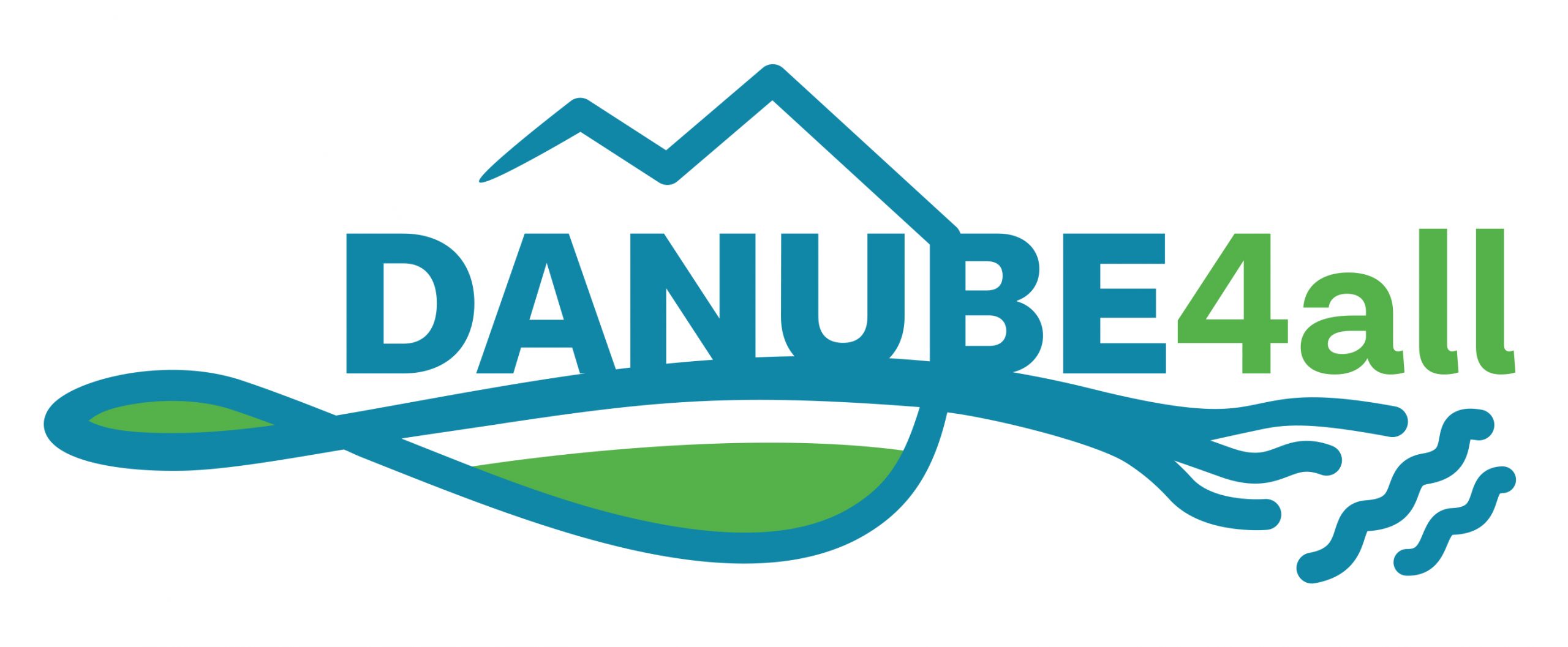
DANUBE4all

- Title
-
DANUBE4all
- Start Date
-
1 January 2023
- End Date
-
31 December 2027
- Funding Body
-
EU Horizon Europe Framework Programme for Research and Innovation
- Coordinator
-
Dr. Helmut Habersack, BOKU, The University of Natural Resources and Life Sciences, Vienna
- Project Partners:
-
Universitaet fuer Bodenkultur Wien (BOKU), Zentrum fuer Soziale Innovation ZSI), PULSAQUA, Institutul National de Cercetare-Dezvoltare Pentru Geologie Marina (GeoEcoMar), Odessa State Environmental University (OSENU), Ecologic Institut gemeinnuetzige, Institute for Multidisciplinary Research, University of Belgrade (IMSI), Global Water Partnership Central and Eastern Europe (GWP CEE), Forschungsverbund Berlin e.V. / Leibn. Instit. of Freshw. Ecol. Inl. Fish. (FVB.IGB), Consiglio Nazionale delle Ricerche (CNR), Ruder Boskovic Institute (RBI), University College Cork – National University of Ireland, Cork (UCC), Institute of Biodiversity and Ecosystem Research (IBER-BAS), Vyskumny Ustav Vodneho Hospodarstva (VUVH), Stichting Deltares, Institutul National de Cercetare-Dezvoltare Delta Dunarii (INCDDD), The University of Stirling, Univerza v Ljubljani (UL FGG), Danube River Network of Protected Areas (DANUBEPARKS), WWF Hungary, WWF Romania, World Fish Migration Foundation, viadonau Oesterreichische Wasserstrassengesellschaft (viadonau), Budapest University of Technology and Economics (BME), Plymouth Marine Laboratory Limited (PLM), CIVITTA Strategy & Consulting SA
- Principal Investigator:
- Research Area
-
Danube River Basin
- Website
Introduction
DANUBE4all is an EU ‘Lighthouse Initiative’ in support of Mission “Restore our ocean and waters by 2030″. This 5-year, Horizon Europe funded project consists of a consortium of 48 Partners and Associated Partners from 14 European countries.
DANUBE4all aims to restore freshwater ecosystems in the Danube River Basin through the development of a comprehensive, scientifically based and practically orientated Restoration Action Plan (RAPDRB). The project seeks to address the lack of knowledge, awareness, and participation of local people and business actors in the implementation of freshwater ecosystem restoration. In this pursuit, DANUBE4all is an unprecedented co-creation process between scientists, researchers, SMEs, investors, public bodies, policymakers, and local communities.
The project takes a multi-sectoral approach to addressing the diverse set of environmental challenges facing the Danube River Basin. These include extensive loss of river connectivity and associated ecosystem degradation, biodiversity losses, and a need for new approaches to nature-based solutions that can help revitalize the way we interact with the river.
Aim
The overarching ambition of DANUBE4all is the development of a strategic Danube Basin Restoration Action Plan (DBRAP).
This plan will be scientifically based, practically orientated, and will be the result of a unique scientific, social and economic based collaboration that aims to integrate the following objectives:
- Ecological status and biodiversity improvement and ecosystem connectivity
- Flood and drought risk reduction
- Enhancement of sediment continuity
- Economic interests
- Inhabitants’ interests and Citizen Science
Thus, DANUBE4all seeks to integrate action on these environmental concerns with social and economic wellbeing; embracing a science-to-people approach that actively integrates public interests and empowers all Danube stakeholders.
Work Packages
Work Package 1: Project Management (Lead – BOKU, Austria]
The aim of WP1 is to support the consortium to meet all operational, technical, financial and contractual responsibilities; ensure good communications and effective project coordination within the consortium and with the Commission; ensure good project governance, strategic oversight, effective financial management, data management and curation, organising of the AGMs, and interproject collaboration. WP1 oversees the effective implementation and delivery of the entire project including routine operations, planning, reporting, and meeting contractual obligations.
Work Package 2: Reconnect Rivers, Floodplains and Delta [Lead – Budapest University of Technology and Economics (BME)]
WP2 focuses on assessing the status of the Danube’s physical connectivity as well as assessing best options for action and restoration measures in the Danube River Basin (DRB). The river will be assessed in terms of its longitudinal, lateral, vertical and temporal connectivity, from its source in the Black Forest mountains to the Delta region.
In achieving this, WP activities and tasks will focus on researching flow dynamics, sediment transport, water quality and biota within the river. These results will bring the requisite scientific understanding to the relevant stakeholders who require this fundamental understanding of the river’s current connectivity status in order to drive effective decision making in river restoration activities.
Work Package 3: Improve Water (Ecological) Status and Key Species Populations [Lead – Institute for Multidisciplinary Research, University of Belgrade (IMSI)]
From a focus on river connectivity in WP2, WP3 aims to deliver new insights on how changes in river connectivity impact upon aquatic biodiversity. The WP specifically addresses the status of endangered species as well as the situation of invasive species basin-wide, from mountains to coast.
GIS outputs and map-based visualizations will form a key part of WP outputs. Innovative monitoring methodologies are to be employed to support the assessment of threatened species, conservation stocking, restoration measures and other specified targets. To achieve a more integrated understanding of how best to employ NBS, consultation processes with different stakeholder groups will take place, alongside Citizen Science approaches which will be created in close cooperation with WP2, WP4, WP5.
Work Package 4: Win2 – Create Multiple Benefits and Business Models from NBS [Lead – Forschungsverbund Berlin e.V. / Leibn. Instit. of Freshw. Ecol. Inl. Fish. (FVB-IGB)]
The primary objective of WP4 is to demonstrate the multiple benefits to society that arise from implementing NBS in the river and floodplain systems of the Danube River Basin. This will largely be achieved through the demonstration of actual Win2 scenarios undertaken in the Demonstration Areas.
Work Package 5: Empowered inhabitants, communities and Citizen Science [Lead – Pulsaqua]
WP5 contains the core of DANUBE4all stakeholder engagement and Citizen Science activities and objectives. Project partners will focus on the involvement of local communities where relevant during all stages of the project to ensure that communities around the Danube Basin are involved and are also able to participate in the different stages of research activities.
These aims will be achieved using a hybrid of strategies, using Internet of Things (IoT) tools in combination with in-person workshops and activities to enable better connection between people of different regions and countries of the Danube, and between people and the river itself. Outputs include a concept plan for Exhibition and Public Lab, a Danube River Action Guidebook, and a Citizen Science toolbox.
Work Package 6: Demonstration Sites for Restoration [Lead – Institutul National de Cercetare-Dezvoltare Pentru Geologie Marina (GeoEcoMar)]
The objective of WP6 is to consolidate the data and findings from WP2-4 and use this to demonstrate and prove the DANUBE4all concept within the 3 Demonstration Sites.
Work methodologies from WP2-4 will be applied in a detailed manner, with the economic benefits computed for each specific case. All outreach activities will be discussed and planned together with the local communities, in close collaboration with WP5. This consolidation and creation process will be the model upon which all replication and upscaling efforts (WP7) will be based, and also be the gateway through which Associated Regions engage with DANUBE4all. Work Package 7: Danube Restoration Action, Upscaling and Replication.
Work Package 7: Danube Restoration Action, Upscaling and Replication [Lead – BOKU]
WP7 centers around the production of highly detailed, cutting-edge, GIS based spatial maps particularly focused on the DAs. These will be the tool through which implementation, upscaling, replication and training of overall project outcomes will be translated to the 10 project SS and beyond.
The GIS tool will also support the production of impactful factsheets for all major river barriers, degraded floodplains and lagoons in the DRB with information on existing conditions, such as biota, hydromorphology etc. It will also elaborate on the Win2 NBS measures suggested for restoring free-flowing rivers, as well as their ecological, economic and business benefits.
The analytical and visualization options of these tools will also support the creation of the overall Danube Basin Restoration Action Plan.
Work Package 8: Dissemination, Exploitation and Communication [Lead – MaREI, UCC]
WP8 will apply a collaborative approach to communicate and disseminate project activities, outputs and findings throughout the project to a variety of audiences. Major target audiences include public authorities, private sector organizations, industrial users of freshwaters resources, waterway authorities and managers, academia, and the general public.
The WP will ensure that DANUBE4all is a tangible brand recognized throughout the EU. WP8 will manage project communications and develop outputs including a project website, fact sheets and newsletters to disseminate the project and use audience appropriate communication pathways (e.g. website, scientific reports and e-mail lists) to reach intended project audiences. It is intended to communicate project results and outputs in such a way as to maximize understanding and awareness of the opportunities and possibilities the results afford.
Contact
Lead Project Coordinator: Helmut Habersack | ta.ca.ukob@kcasrebah.tumleh
MaREI contact: Kathrin Kopke | ei.ccu@ekpok.k






